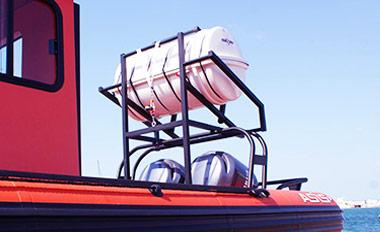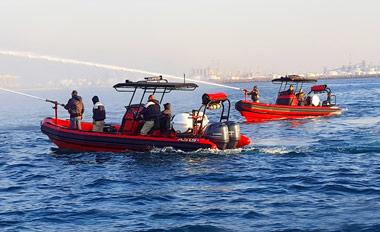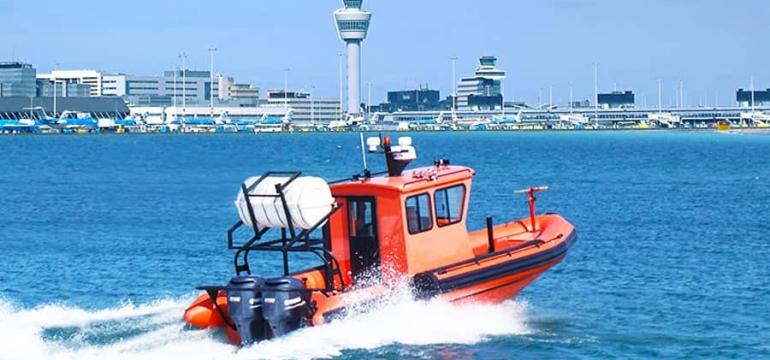What to look for in a rescue boat?
When it comes to rescue boats, the ideal type of boat for rescue missions is Rigid Hull Inflatable Boats (RHIBs) because of their design, versatility, agility, and speed. These rescue boats are designed to assist during rescue operations which can vary from flood rescue to airport rescue or rescue sailors in distress; all of which have for purpose rescuing people.
Which boat design is best suited for such a mission you may ask?
For rescue missions, time is everything as every second counts in saving a life. A rescue RHIB-designed allows you to not only reach shallow water but to beach the boat close to the shore which is very important for rescue missions. RHIBs are significantly lighter than conventional hard-sided boats making it easier to launch and retrieve via a boat trailer or a shipboard davit.
The weight saving of a RHIB makes it very economical and allows for an increased operational range and fuel efficiency. Its light weight also allows the RHIB to be very agile in maneuverability and gives it the ability to go faster. The versatility quality of the RHIB comes into play when an airport rescue boat can also be used as a firefighting boat. One RHIB could serve more than one type of rescue mission. If interested to learn more, you can click here to read about ASIS Airport Cabin Rescue boat.
RHIBs that have an opening in the tube called a diver-notch allow you to pull up people from the sea to the boat smoothly. In turn, it allows the rescuer to get direct access to the water safely. This feature in the design of the SAR boat saves time and efficiency during the operation. ASIS Rescue boats are all designed with a diver-notch to facilitate the rescue mission.
Another must-have feature in the boat design to look out for is the self-righting system which is an essential safety feature to have on your rescue RHIB to prevent the risk of capsize. The self-righting system provides safe refuge for the crew by incorporating a mechanism whereby the boat will return upright following a knockdown or capsize.
Another feature that would be a plus to have depending on your logistical needs would be the single-point lifting which facilitates the launching and lifting of the boat from a shipboard with a single hook, saving you in time and safety.
Last but not least, rescue boats should be designed in a way to have life rafts on board in case of additional rescue operation capacity. These life rafts can be easily deployed in a matter of seconds when needed to rescue more people in distress. This is thanks to their lightweight and efficient mechanism to assist in the rescue of people and carry the necessary equipment.
Now that you are aware of the main features to look out for when seeking a boat, you can check out the ASIS SAR RHIBs range which is designed and equipped with all the features mentioned above, enabling the users to fulfill their rescue duties in all confidence and ease no matter the sea conditions.





